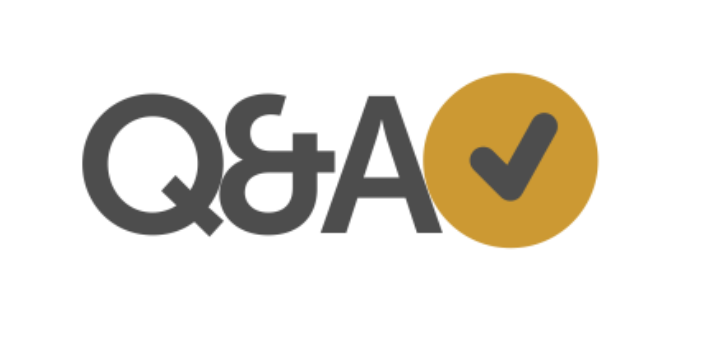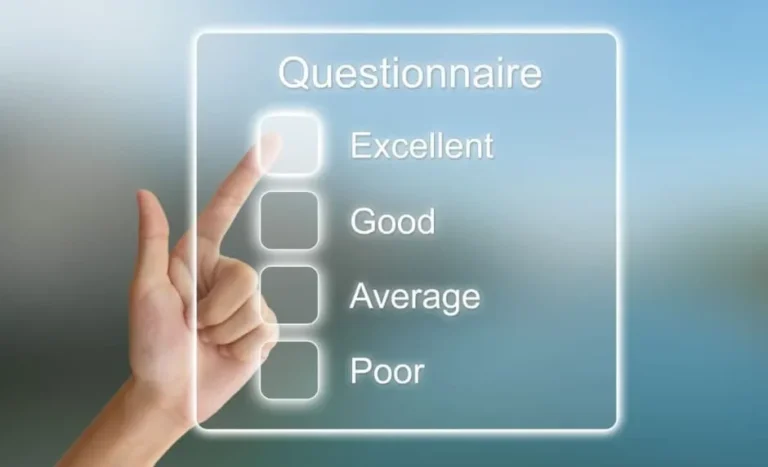Have you ever been curious about those puzzling “Q12” questions in a Gallup interview? They might seem like just regular questions, but they’re actually super important for figuring out what makes a workplace great.
Each question has a deeper meaning that helps us understand how engaged employees are and how successful the organization is. By looking into what these questions really mean, we can learn how to create a workplace where everyone is excited and involved in what they do.
Let’s see the simple questions that can make workplaces awesome.
Table of contents
- What Do Q12 Mean?
- What are Gallup Interview Questions?
- Benefits of Gallup Interview Questions
- Gallup Culture Survey Questions
- 30 Gallup Interview Questions & Sample Answers
- How Do Organizations Measure Employee Engagement with the Q12 Survey?
- How to Develop Gallup Survey Questions
- Frequently Asked Questions
- Conclusion
- References
- Recommendations
What Do Q12 Mean?
The “Q12” are twelve questions made by Gallup for their Employee Engagement Survey. These questions are meant to see how involved employees are at work. They ask about different parts of the workplace, like how well the managers do, and if the employees are happy.
The Gallup Q12 survey questions are:
- Do you know what is expected of you at work?
- Do you have the materials and equipment to do your work right?
- At work, do you have the opportunity to do what you do best every day?
- In the last seven days, have you received recognition or praise for doing good work?
- Does your supervisor, or someone at work, seem to care about you as a person?
- Is there someone at work who encourages your development?
- At work, do your opinions seem to count?
- Does the mission/purpose of your company make you feel your job is important?
- Are your associates (fellow employees) committed to doing quality work?
- Do you have a best friend at work?
- In the last six months, has someone at work talked to you about your progress?
- In the last year, have you had opportunities to learn and grow?
What are Gallup Interview Questions?
Gallup interview questions are the ones they ask during surveys or interviews to understand how employees feel about their job and workplace. They want to know if people are happy and engaged at work.
The main set of questions is called the Q12, which has twelve questions about things like how clear the job expectations are, if employees feel appreciated, and if they have chances to grow. The aim of these interviews and surveys is to figure out what the company does well and where it can do better to make employees happier and more productive.
Benefits of Gallup Interview Questions
Using Gallup interview questions, especially the Q12, offers several benefits:
- Understanding Engagement: These questions help companies know how involved their employees are. Engaged employees work better, think of new ideas, and stick with their jobs.
- Finding Strengths and Weaknesses: Gallup questions show where a company does well and where it needs to improve. This helps leaders make better plans.
- Better Communication: Questions about clear instructions, praise, and feedback show where communication could be better.
- Happier Employees: Giving praise, chances to learn, and good relationships with co-workers and bosses make employees happier with their jobs.
- Positive Company Culture: Gallup questions remind everyone of important things like saying thank you, working together, and always learning.
- Keeping Employees: When employees feel connected, they’re more likely to stay with the company.
- Better Results: Happy, involved workers make the company more successful. That means more money, happier customers, and new ideas.
Gallup Culture Survey Questions
While Gallup doesn’t provide a specific “culture survey,” they offer questions that organizations can use to assess and improve their workplace culture. Below are a few questions that could be part of the Gallup culture survey.
- Do you believe the values of this organization align with your values?
- Do you feel a strong sense of belonging within this organization?
- How would you rate the level of trust between employees and leadership?
- Is there open and transparent communication within the organization?
- Do you feel empowered to voice your opinions and ideas without fear of reprisal?
- How would you describe the level of collaboration and teamwork within your team or department?
- Are conflicts and disagreements handled constructively and fairly?
- Does this organization prioritize diversity, equity, and inclusion?
- How effectively does leadership demonstrate and promote the organization’s values?
- Do you feel that your contributions are valued and recognized by the organization?
Related Article: 100+ Open-Ended Survey Questions Examples
30 Gallup Interview Questions & Sample Answers
- Do you know what is expected of you at work?
- Yes, I have clear job responsibilities outlined in my role description, and my manager regularly communicates expectations and priorities to me.
- Do you have the materials and equipment to do your work right?
- Absolutely, my organization ensures that all employees have access to the necessary tools and resources to perform their jobs effectively. If there’s ever a shortage, there’s a clear process for requesting what’s needed.
- At work, do you have the opportunity to do what you do best every day?
- I believe my role aligns well with my strengths and skills. I’m encouraged to leverage my talents to achieve objectives and contribute to the team’s success.
- In the last seven days, have you received recognition or praise for doing good work?
- Yes, my team and manager regularly acknowledge and appreciate my contributions. Recently, I received positive feedback on a project I completed ahead of schedule.
- Does your supervisor, or someone at work, seem to care about you as a person?
- Absolutely, my supervisor demonstrates genuine concern for my well-being and professional development. They take the time to check in regularly and provide support when needed.
- Is there someone at work who encourages your development?
- Yes, I’m fortunate to have mentors and colleagues who support my growth and offer guidance. Whether it’s through formal training programs or informal coaching, there’s a culture of continuous learning.
- At work, do your opinions seem to count?
- Yes, my organization values diverse perspectives and encourages open dialogue. I feel comfortable sharing my ideas and know that they’re considered in decision-making processes.
- Does the mission/purpose of your company make you feel your job is important?
- Absolutely, I’m passionate about our company’s mission and how my role contributes to achieving it. It gives me a sense of purpose and drives me to excel in my work.
- Are your associates (fellow employees) committed to doing quality work?
- Yes, my colleagues are dedicated professionals who take pride in delivering high-quality results. There’s a strong sense of teamwork and accountability across the organization.
- Do you have a best friend at work?
- Yes, I’ve developed strong relationships with my colleagues, and I consider some of them to be close friends. Having a supportive network at work makes the environment more enjoyable and productive.
- In the last six months, has someone at work talked to you about your progress?
- Yes, my manager conducts regular check-ins to discuss my performance, goals, and areas for development. These conversations help me stay aligned with expectations and track my growth.
- In the last year, have you had opportunities to learn and grow?
- Definitely, my organization prioritizes employee development and offers various learning opportunities, such as workshops, seminars, and tuition reimbursement programs. I’ve taken advantage of these resources to expand my skills and knowledge.
- How do you feel about the level of communication within the organization?
- Overall, I think the communication within the organization is strong. There are regular updates from leadership, team meetings to discuss progress and challenges, and an open-door policy that encourages dialogue at all levels.
- Can you describe a time when you felt particularly engaged and motivated at work?
- One instance that comes to mind is when my team collaborated on a challenging project. We were all passionate about the goal, and our contributions were valued. The support and encouragement from my colleagues and manager made me feel energized and motivated to give my best effort.
- How does the organization recognize and reward employee achievements?
- The organization has a variety of recognition programs in place, including employee of the month awards, spot bonuses for outstanding performance, and public acknowledgment during team meetings. These gestures go a long way in making employees feel valued and appreciated.
- What do you think sets our company culture apart from others you’ve experienced?
- I believe what sets this company apart is its emphasis on collaboration and teamwork. There’s a genuine sense of camaraderie among employees, and everyone is committed to supporting each other’s success. Additionally, the company’s values are not just words on paper but are reflected in everyday actions and decisions.
- How does your manager support your professional development?
- My manager is very supportive of my professional development goals. We have regular one-on-one meetings to discuss my career aspirations, and they provide guidance on skill development opportunities, including additional responsibilities, training programs, and mentoring relationships.
- Can you share a time when you had to overcome a challenge at work?
- One challenge I faced was during a tight deadline for a project. There were unforeseen obstacles that required quick thinking and teamwork to overcome. I took the initiative to gather input from team members, prioritize tasks, and communicate effectively with stakeholders to ensure we met our deadline successfully.
- How do you feel about the level of trust between employees and leadership?
- Overall, I think there’s a high level of trust between employees and leadership. Leaders are transparent in their communication, listen to employee feedback, and demonstrate integrity in their actions. This trust fosters a positive work environment where everyone feels empowered to contribute and make a difference.
- How does the organization promote work-life balance?
- The organization recognizes the importance of work-life balance and offers flexible scheduling options, telecommuting opportunities, and wellness programs to support employees’ well-being. Additionally, there’s a culture of respect for personal time and boundaries, which allows employees to recharge and maintain a healthy balance between work and life commitments.
- Can you describe a time when you felt particularly proud to be part of this organization?
- One moment that stands out to me was when our team received recognition for a project we completed that had a significant impact on the company’s success. It was rewarding to see our hard work pay off and to know that we were contributing to the organization’s goals in a meaningful way.
- How does the organization encourage innovation and creativity?
- The organization encourages innovation and creativity by fostering a culture of experimentation and risk-taking. Employees are encouraged to share their ideas and suggestions for improvement, and there are channels in place for submitting innovation proposals and receiving implementation support.
- How do you feel about the level of teamwork within your department?
- I believe teamwork is one of the strengths of our department. We collaborate effectively, leverage each other’s strengths, and support one another to achieve common goals. There’s a sense of unity and shared purpose that drives our success.
- Can you describe a time when you received constructive feedback and how you handled it?
- I appreciate constructive feedback as an opportunity for growth. One example is when my manager provided feedback on a presentation I delivered. I listened attentively, asked clarifying questions, and used the feedback to improve my communication skills for future presentations.
- How does the organization prioritize employee well-being and mental health?
- Employee well-being and mental health are top priorities for the organization. There are resources available, such as employee assistance programs, mental health awareness initiatives, and stress management workshops. Additionally, managers are trained to recognize signs of distress and provide support to employees when needed.
- Can you share a time when you demonstrated leadership skills, even if you weren’t in a formal leadership role?
- Certainly, there was a project where I took on a leadership role by organizing team meetings, delegating tasks, and providing guidance to team members. While I wasn’t officially a leader, I stepped up to ensure the project’s success and fostered a collaborative environment where everyone felt valued and motivated.
- How do you feel about the level of diversity and inclusion within the organization?
- I believe the organization is committed to fostering a diverse and inclusive workplace. There are initiatives in place to promote diversity hiring, cultural competency training, and affinity groups for underrepresented employees. While there’s always room for improvement, I appreciate the organization’s efforts in this area.
- Can you describe a time when you had to adapt to change in the workplace?
- Change is inevitable in any organization, and I’ve had several experiences where I’ve had to adapt quickly. One example is when our team underwent a restructuring, and I had to transition to a new role with different responsibilities. I embraced the change, sought out training opportunities, and focused on building new skills to excel in my new role.
- How does the organization promote transparency in decision-making processes?
- Transparency is a core value of the organization, and leaders are committed to keeping employees informed about important decisions and changes. There are regular updates through town hall meetings, newsletters, and open forums where employees can ask questions and provide feedback.
- Can you share a time when you went above and beyond in your role to help a colleague or support a team initiative?
- Absolutely, there was a project where a colleague was struggling to meet a deadline due to unforeseen circumstances. I offered to assist by taking on some of their tasks and providing additional support where needed. By working together, we were able to meet the deadline and deliver a successful outcome for the team.
See Also: 125+ Random Survey Questions | Types and Template
How Do Organizations Measure Employee Engagement with the Q12 Survey?
Here’s how organizations typically measure employee engagement with the Q12 survey:
- Administering the Survey: Organizations distribute the Q12 survey to their employees either electronically or in paper form. Employees are asked to respond to each of the twelve questions based on their experiences and perceptions.
- Collecting Responses: Once employees have completed the survey, their responses are collected and compiled by the organization. This can be done through survey software or manually if using paper surveys.
- Analyzing Results: Organizations analyze the aggregated responses to the Q12 survey to understand overall levels of employee engagement. They may look at individual question scores as well as overall engagement scores to identify patterns and trends.
- Identifying Strengths and Areas for Improvement: Based on the analysis of survey results, organizations identify areas where they excel in engaging employees and areas where there’s room for improvement. This could include aspects such as communication, recognition, development opportunities, and relationships with supervisors.
- Taking Action: Armed with insights from the survey, organizations develop action plans to address areas for improvement and build on strengths. This could involve implementing initiatives to enhance communication, providing more recognition and rewards, offering additional training and development opportunities, or improving leadership effectiveness.
- Monitoring Progress: Organizations continuously monitor employee engagement levels over time to assess the impact of their initiatives and track progress. This may involve conducting regular pulse surveys or follow-up assessments to gauge changes in employee engagement.
- Driving Continuous Improvement: Employee engagement is an ongoing process, and organizations are committed to continuously improving their practices to create a positive and engaging work environment. They use feedback from employees, ongoing assessments, and benchmarking against industry standards to drive continuous improvement efforts.
How to Develop Gallup Survey Questions
Developing Gallup survey questions, or any employee engagement survey questions, requires careful consideration to make sure they ask the right things. Here’s a simple guide to making these questions:
- Figure out what you want to learn from the survey. Do you want to know if employees are happy or if they feel supported by their managers? Knowing this helps you ask the right questions.
- Check out other surveys that ask similar questions. This can give you ideas on how to ask questions in a way that makes sense and gets good answers.
- Brainstorm ideas for questions you could ask. It’s good to ask a mix of questions, some that are easy to answer and some that need more thought.
- Figure out what’s most important to ask about. This could be things like how well employees get along with their co-workers or how they feel about their job.
- Write questions that are easy to understand. You don’t want employees to be confused by what you’re asking.
- Use a scale for answers, like “strongly agree” to “strongly disagree.” This helps you see how strongly employees feel about each question.
- It’s good to ask both positive and negative questions. This way, you get a better idea of what’s going well and what needs to improve.
- Before sending the survey to everyone, test it with a few people to make sure the questions make sense and are easy to answer.
- Once you’re sure the survey is good, send it out to all employees. Make sure to explain why it’s important and why their answers matter.
- After you get everyone’s answers, look at what they said. This helps you see what’s going well and what needs to change to make employees happier at work.
Frequently Asked Questions
The Gallup Q12 survey is a widely used tool for measuring employee engagement. It consists of twelve questions designed to assess various aspects of engagement, satisfaction, and performance within an organization.
Gallup survey questions are made to see how much employees are involved at work. They come from lots of research and look at what makes employees do well at their jobs. These questions are the same for everyone and are known for being good at figuring out what’s happening in a workplace.
The frequency of Gallup surveys can vary depending on organizational needs and resources. Some organizations administer surveys annually, while others may do so more frequently
Organizations should communicate survey results transparently and provide context around key findings. This could involve sharing overall engagement scores, highlighting areas of strength, and outlining action plans to address areas for improvement.
Conclusion
Gallup survey questions are helpful for organizations to see how involved employees are and understand what’s happening at work. These questions are the same for everyone, so organizations can figure out what they’re doing well and where they need to improve their workplace culture.
Because these questions are known to work well, they’re important for making sure employees feel appreciated, involved, and excited to do their best.
References
- Gallup.com – Gallup’s Q12 Employee Engagement Survey
- Studentaffairs.unt.edu – Gallup Survey – What Do the 12 Questions Really Mean?
- Goalbusters.net – The Gallup Q12 Index The Twelve Questions





